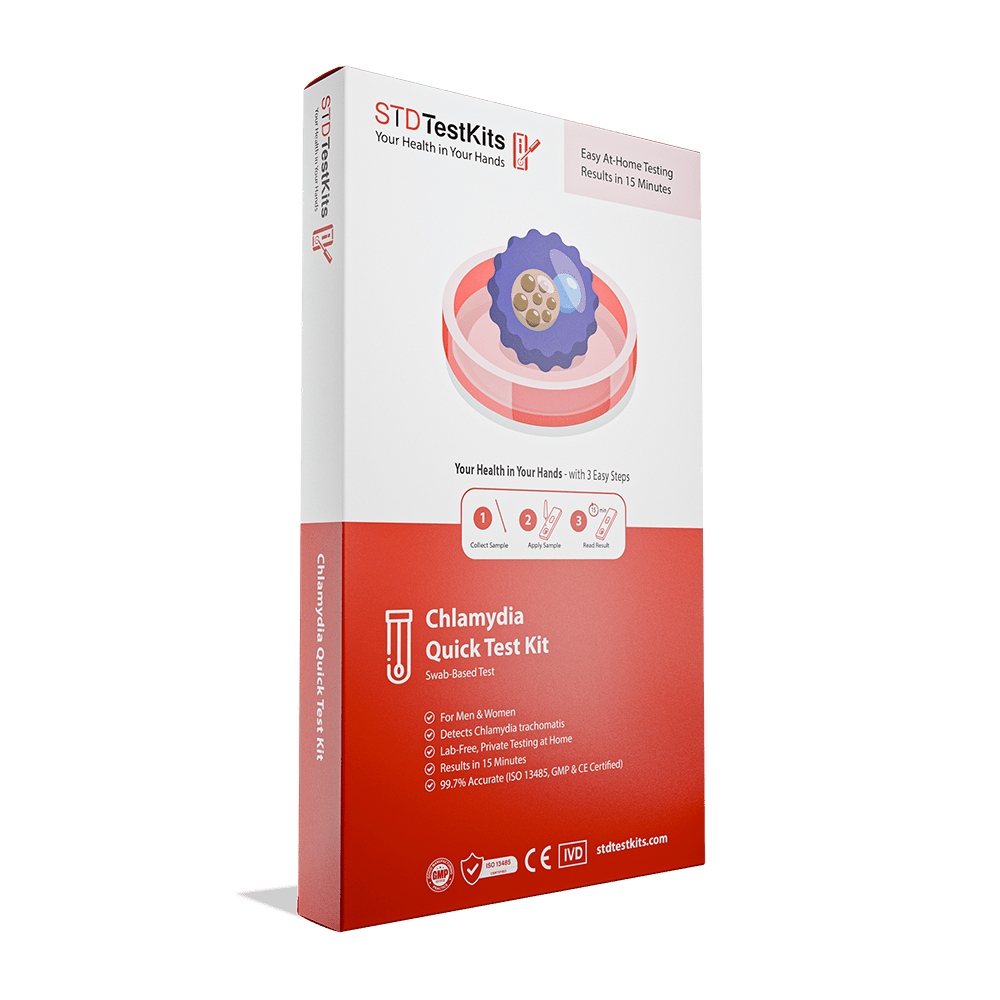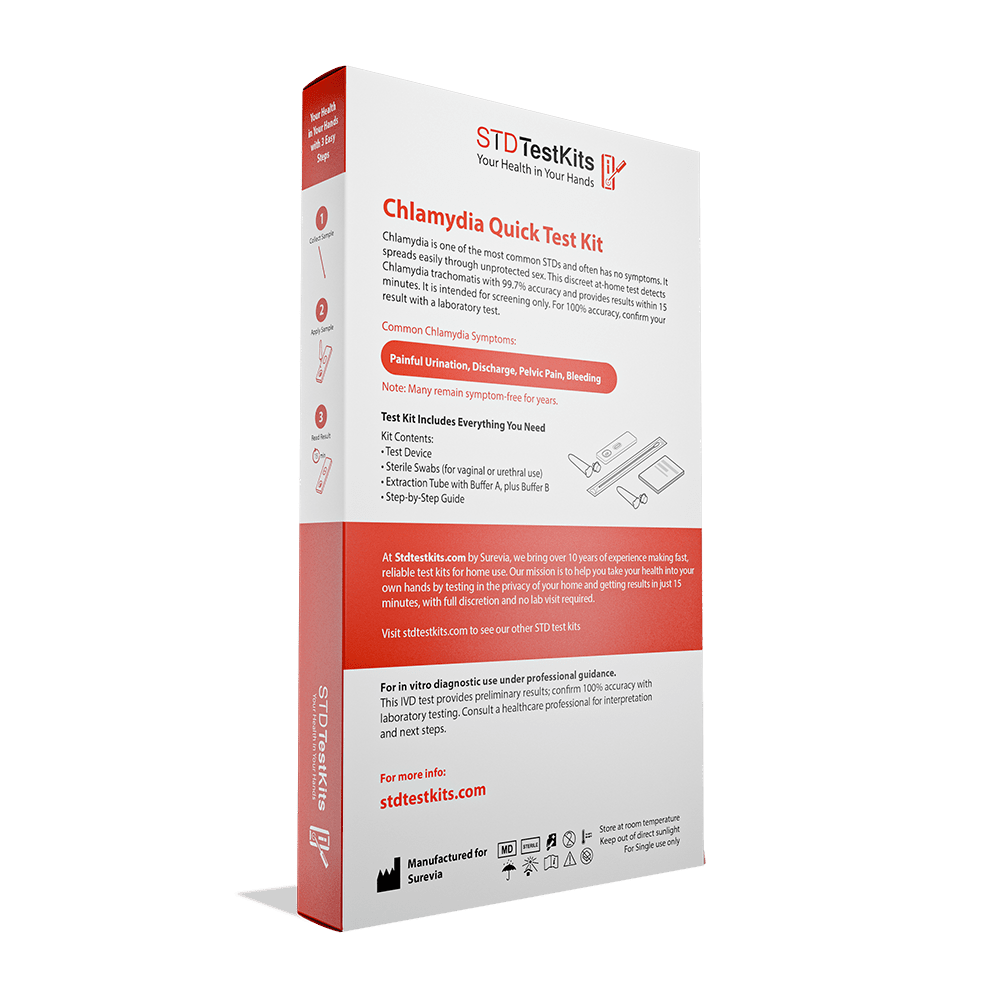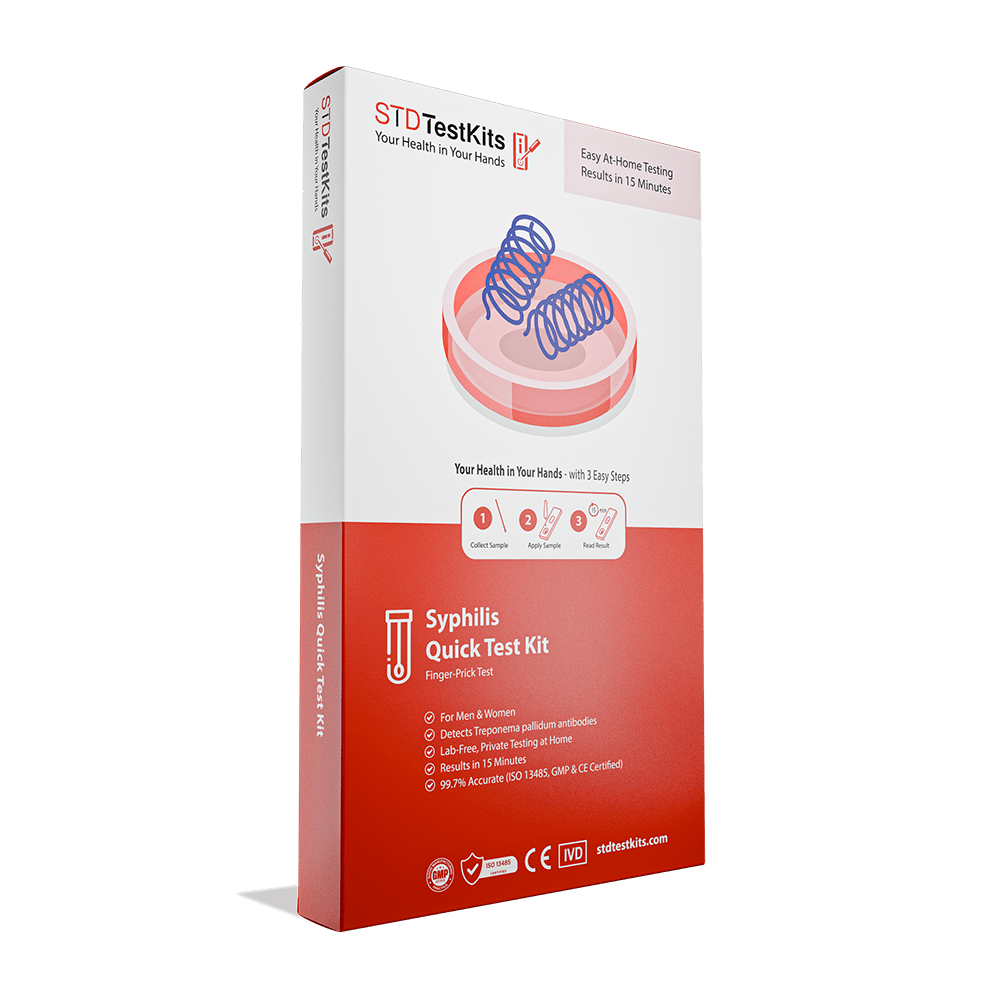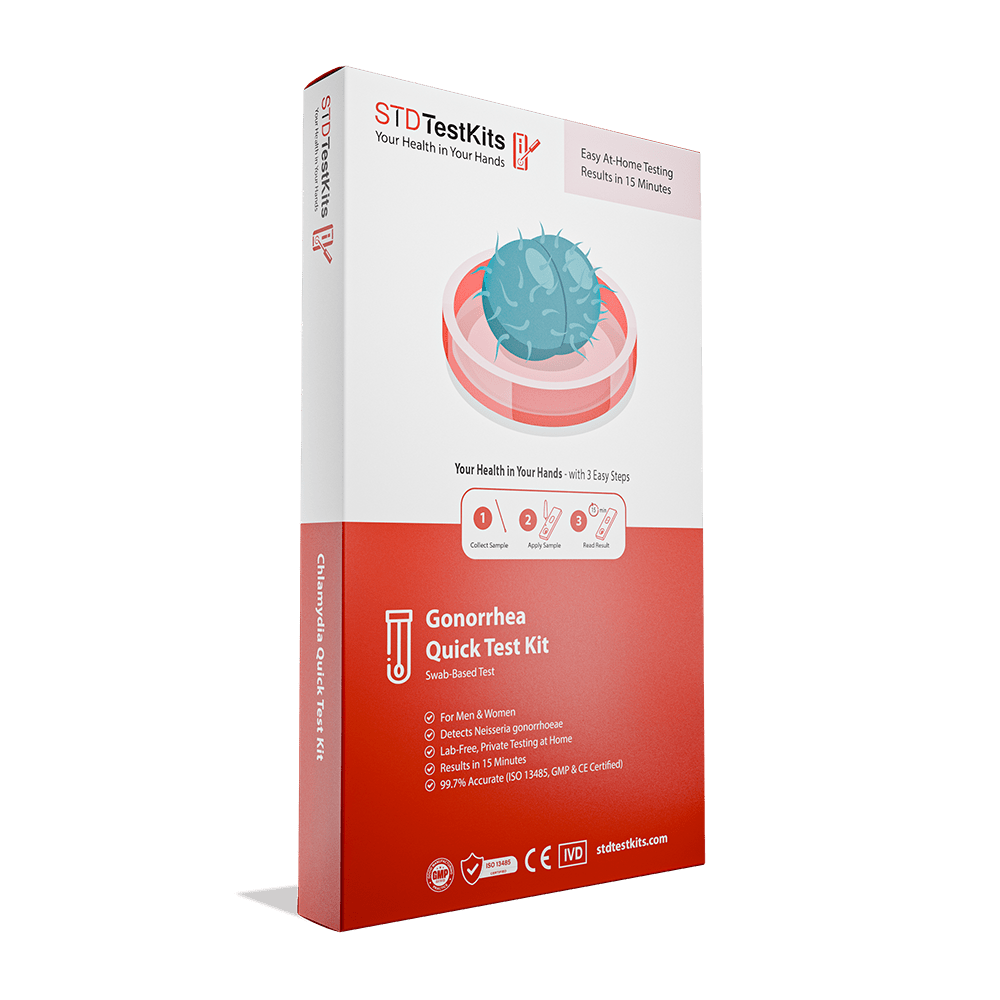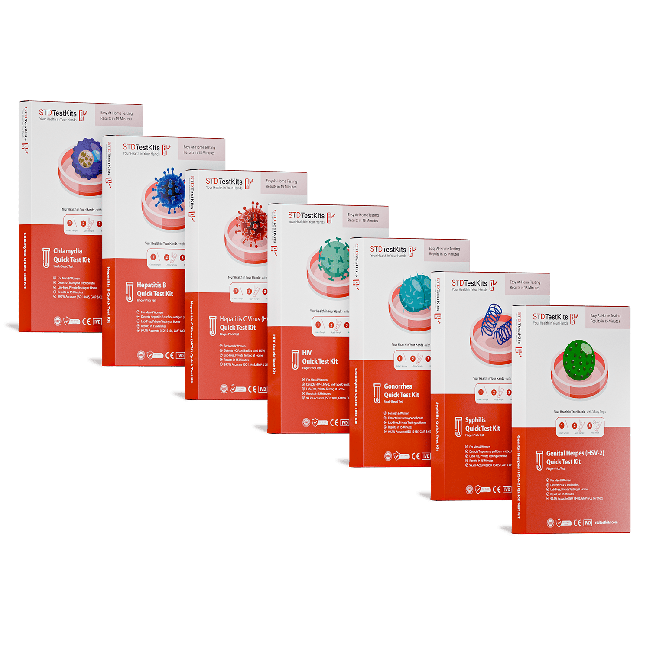Chlamydia is a common bacterial STD caused by Chlamydia trachomatis. It often infects the urethra, cervix, or rectum. Nicknamed the “silent” infection, chlamydia frequently produces no symptoms at all – roughly 3 out of 4 women and 1 out of 2 men with chlamydia don’t notice any signs. Despite this, the bacteria can silently damage the reproductive system. Early diagnosis and treatment are critical, as untreated chlamydia can lead to infertility, pelvic inflammatory disease, and other serious complications.
Our Chlamydia At-Home Test Kit makes screening easy for anyone. Designed for both men and women, it uses a gentle self-collected swab to detect chlamydia antigens (proteins from the bacteria) with over 99% accuracy. You’ll get a clear result in 15 minutes, no lab needed. Skip the uncomfortable clinic visit – this test is simple to use, clinically proven, and shipped with complete privacy (ISO-certified and sent in plain packaging with neutral billing).
Symptoms & Complications
-
Asymptomatic: In most cases, there are no symptoms. About 70% of women and 50% of men have chlamydia without knowing, yet they can still infect partners.
-
Mild: If symptoms occur, they can be mild and easily overlooked: burning during urination, abnormal discharge from the vagina or penis, pain during sex, or light bleeding between periods.
-
Severe: Lower abdominal or pelvic pain and fever (a sign of pelvic inflammatory disease in women), deep pain during intercourse, or in men, painful swelling of a testicle (epididymitis). Rarely, chlamydia can spread and cause arthritis or widespread infection.
-
Untreated Risks: Untreated chlamydia can cause Pelvic Inflammatory Disease (PID) in women, leading to scarred fallopian tubes, ectopic pregnancy, and infertility. In men, it can infect the epididymis and occasionally lead to infertility. Chlamydia also increases the risk of contracting or spreading HIV due to the inflammation it causes. Pregnant women can pass it to babies during delivery, risking neonatal eye infections or pneumonia.
Early & Repeat Testing Recommended
-
Window Period Testing: Test as soon as 2 weeks after exposure if you believe you were exposed. Chlamydia can be detected relatively early, but if you test too soon (just days after exposure), the bacteria might not be detectable – hence it’s wise to test a couple of weeks post-exposure.
-
Confirmatory Test: If your first test is negative but you had a known exposure or continue to have risks, retest about 4 to 6 weeks after exposure to confirm you’re clear. This ensures any infection that was incubating is caught.
Partner Testing Encouraged: Because chlamydia is often symptomless, sexual partners should always be tested as well. If you test positive, notify your partner so they can get tested and treated. It’s important to prevent passing the infection back and forth.
How It Works
-
Collect Sample: Use the provided swab according to the instructions. Women will use a vaginal swab (simply swabbing inside the vagina), while men will use an urethral swab, to collect a sample. It’s pain-free and takes just a minute.
-
Apply & Wait: Mix your swab sample with the included solution and apply a few drops to the test cassette. Then wait about 15 minutes as the test runs.
-
Read Results: The cassette will show lines indicating a positive or negative result for chlamydia. A control line will also appear to confirm the test worked correctly. No microscopes or lab analysis needed, the result is visual and easy to interpret.
Take charge of your health with the Chlamydia At-Home Test Kit, a fast, accurate, and discreet way to know your status. By testing at home, you ensure privacy and quick action. Order today and encourage partners to get tested too, because knowing early means easy treatment and no lasting harm.

















